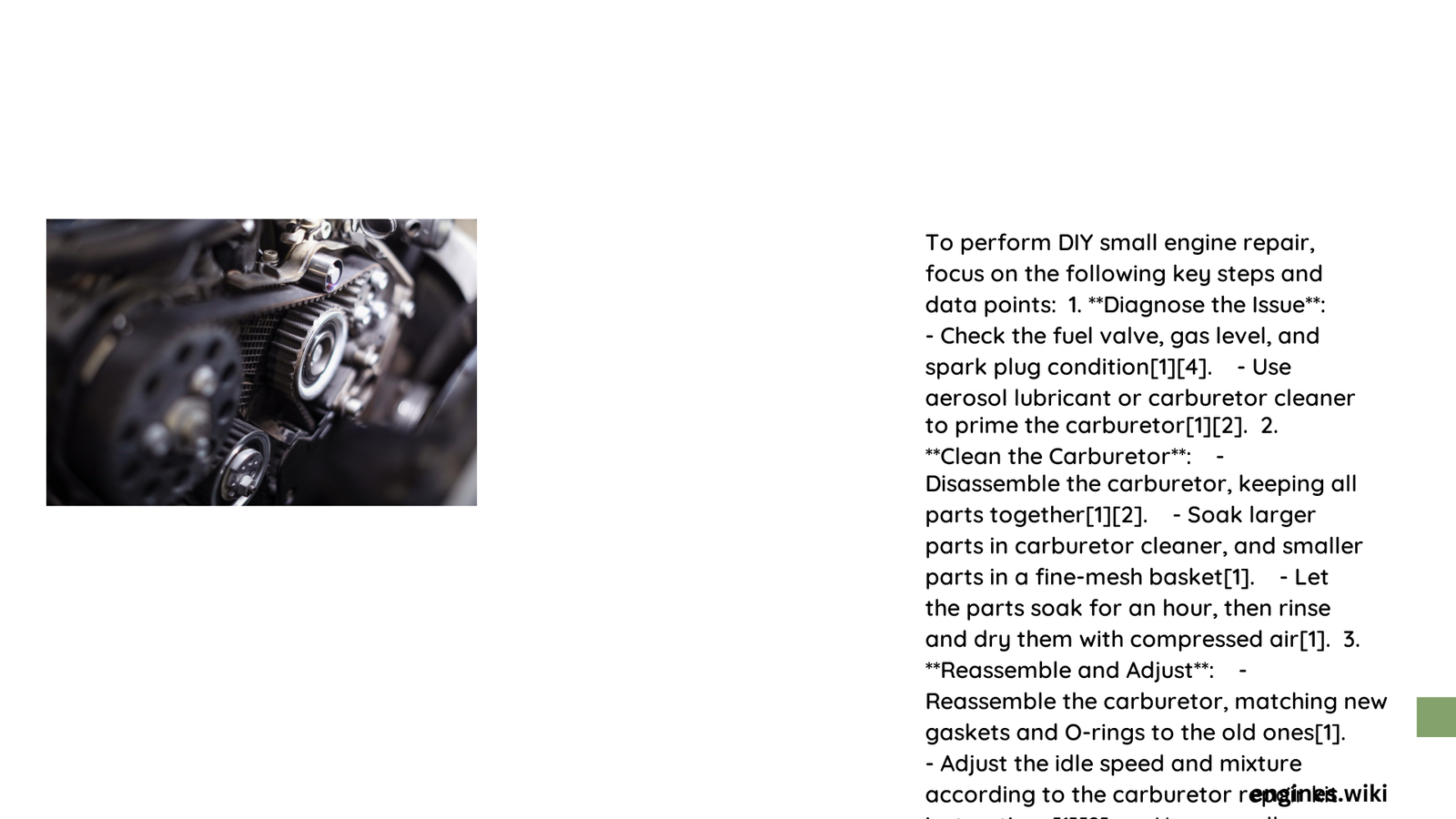Small engine repair can seem daunting, but with the right knowledge and tools, even novice mechanics can diagnose and fix common issues. Whether you’re dealing with a lawn mower, generator, or outdoor power equipment, understanding the fundamental principles of small engine maintenance can save you time, money, and frustration. This comprehensive guide will walk you through essential techniques, diagnostic procedures, and maintenance strategies for successful DIY small engine repair.
What Causes Most Small Engine Problems?
Small engines typically fail due to several common issues:
| Problem Category | Potential Causes | Repair Difficulty |
|---|---|---|
| Starting Failures | Spark plug wear, stale fuel, carburetor blockage | Low to Moderate |
| Performance Degradation | Dirty air filters, fuel system contamination | Low |
| Overheating | Insufficient cooling, low oil levels | Moderate |
How to Diagnose Starting Problems?
Spark Plug Inspection
- Remove spark plug using specialized socket
- Check for visible wear or carbon deposits
- Measure electrode gap with precision gauge
- Replace if signs of significant deterioration are present
Fuel System Diagnostics
- Verify Fuel Quality
- Drain old or stale gasoline
- Use fresh fuel with appropriate octane rating
-
Add fuel stabilizer for extended storage
-
Carburetor Cleaning Procedure
- Disassemble carburetor carefully
- Soak components in specialized cleaning solution
- Use compressed air to remove residual debris
- Reassemble with new gaskets
What Tools Are Essential for DIY Small Engine Repair?
Recommended Toolkit:
– Spark plug socket
– Adjustable wrench
– Screwdriver set
– Multimeter
– Carburetor cleaning kit
– Torque wrench
– Safety glasses
– Mechanic’s gloves
How to Prevent Common Engine Failures?
Regular Maintenance Checklist
- Change oil every 25-50 operating hours
- Clean/replace air filters quarterly
- Inspect spark plugs annually
- Check fuel lines for cracks or leaks
- Lubricate moving parts periodically
What Are Advanced Troubleshooting Techniques?
Compression Testing
- Remove spark plug
- Connect compression gauge
- Crank engine multiple times
- Compare readings with manufacturer specifications
Electrical System Diagnostics
- Test ignition coil resistance
- Check wire continuity
- Verify ground connections
- Inspect electrical connectors for corrosion
Pro Tips for Successful Repair
- Always consult engine manual
- Work in well-ventilated area
- Use manufacturer-recommended replacement parts
- Document repair process
- Take photographs during disassembly
Safety Precautions

- Disconnect spark plug wire before repairs
- Wear protective equipment
- Allow engine to cool completely
- Work on stable, flat surface
- Keep workspace organized
Cost Considerations
| Repair Type | Estimated DIY Cost | Professional Repair Cost |
|---|---|---|
| Spark Plug Replacement | $5-$20 | $50-$100 |
| Carburetor Cleaning | $10-$30 | $100-$250 |
| Complete Engine Service | $50-$100 | $300-$500 |
Reference:
– Briggs & Stratton Engine Repair Guide
– Small Engine Repair Manual
– Professional Mechanics Association Resources
